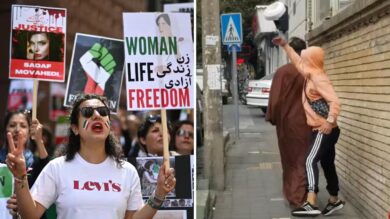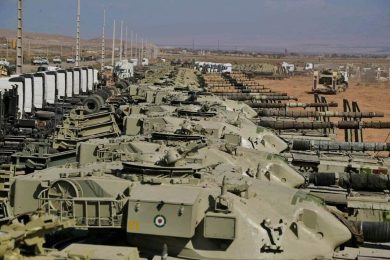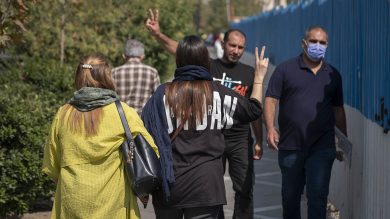Iranian women have long been at the forefront of resistance, but in recent years, their role in fighting for freedom and justice has become more visible and undeniable. From street protests to digital activism, from legal battles to underground resistance, women in Iran are leading a historic movement that is shaking the foundations of authoritarian rule.
The death of Mahsa Amini in 2022, after her arrest by the morality police, ignited nationwide protests that soon turned into a broader fight for human rights, gender equality, and democracy. These protests, led predominantly by young women, have not only challenged Iran’s oppressive laws but have also inspired global solidarity movements.
Despite violent crackdowns by the Islamic Revolutionary Guard Corps (IRGC), arrests, torture, and state-sponsored censorship, Iranian women continue to defy the regime in ways that are changing the country’s future. Their courage and resilience prove that women are not just participants in this revolution—they are its leaders.
1. The Role of Women in Iran’s Resistance Movements
A. A Long History of Defiance
Iranian women have historically played a major role in political and social movements, including:
• The Constitutional Revolution (1905-1911), where women demanded education rights and legal reforms.
• The 1979 Revolution, where women participated in protests but were later stripped of their rights under the new Islamic Republic.
• The Green Movement (2009), where women led protests against election fraud and state repression.
• The 2017-2019 hijab protests, where women openly defied mandatory hijab laws, sparking a broader conversation about bodily autonomy.
B. Women as Leaders in the 2022 Uprising
The protests following Mahsa Amini’s death were uniquely women-led, marking a new era in Iran’s fight for freedom. Women:
• Removed their hijabs in public, a crime punishable by arrest and imprisonment.
• Cut their hair in symbolic defiance of the regime’s control over their bodies.
• Chanted slogans like “Women, Life, Freedom”, uniting diverse groups under a common cause.
• Used social media to share evidence of state violence, bypassing state-controlled media.
Their actions inspired people across generations and gained international recognition, showing the world that Iranian women are leading the charge for a free Iran.
2. The IRGC’s Repression: How the Regime Tries to Silence Women
A. Brutal Crackdowns on Protests
The IRGC and Basij forces have responded with extreme violence, using:
• Live ammunition and rubber bullets against peaceful demonstrators.
• Tear gas and water cannons to disperse crowds.
• Mass arrests, with women facing harsh sentences for participating in protests.
According to human rights organizations, thousands of women have been arrested since 2022, and many have been subjected to torture and sexual violence in IRGC-controlled prisons.
B. Targeting Women Activists and Journalists
Women who speak out—whether as activists, journalists, or social media influencers—are among the IRGC’s top targets.
• Niloofar Hamedi, the journalist who broke the story of Mahsa Amini’s death, was imprisoned for exposing state brutality.
• Narges Mohammadi, a leading human rights activist, continues to fight against gender apartheid despite repeated arrests.
• Masih Alinejad, an exiled journalist, has survived multiple assassination attempts for her advocacy against compulsory hijab laws.
The regime uses false charges, such as “acting against national security”, to imprison women who challenge its rule.
C. Digital Repression: Controlling the Narrative
The Iranian government frequently shuts down the internet during protests to prevent activists from sharing footage of state violence. The IRGC’s cyber division also:
• Monitors and hacks the accounts of activists.
• Spreads disinformation to discredit protesters.
• Uses AI surveillance to track women who defy hijab laws in public places.
Despite this, Iranian women continue to outsmart the regime, using VPNs, encrypted messaging apps, and international media connections to share their stories.
3. Women’s Resistance Beyond the Streets: Different Forms of Defiance
A. Everyday Acts of Rebellion
Even outside mass protests, Iranian women resist daily by:
• Going out without hijabs in defiance of strict dress codes.
• Refusing to comply with gender segregation in public spaces.
• Teaching underground classes on women’s rights and political activism.
These seemingly small acts are powerful tools in dismantling the regime’s gender apartheid policies.
B. Women Leading in Exile
Iranian women in the diaspora play a crucial role in:
• Lobbying foreign governments to impose sanctions on the IRGC.
• Organizing global protests in cities like London, Berlin, and Washington D.C..
• Creating media campaigns that keep international attention on Iran’s movement.
Figures like Shirin Ebadi (Nobel Laureate), Masih Alinejad, and Nazanin Boniadi have become international voices for Iranian women’s fight.
4. Why Women’s Leadership is Key to Iran’s Future
A. The Symbolism of Women-Led Movements
Women’s defiance is not just about gender equality; it is about:
• Rejecting the regime’s control over personal freedoms.
• Challenging systemic oppression that affects all Iranians, regardless of gender.
• Uniting different sectors of society under a common cause: freedom from dictatorship.
B. Women as the Bridge to a Democratic Iran
History shows that women-led movements often lead to broader democratic transformations. In Iran, women:
• Have built intersectional alliances between workers, students, and ethnic minorities.
• Have turned feminist resistance into a national movement for democracy and human rights.
• Continue to inspire global feminist movements, proving that gender justice is central to political freedom.
C. The Next Generation is Watching
Iran’s Generation Z, having grown up with internet access and global awareness, is deeply influenced by women’s resistance. This generation:
• Rejects conservative ideologies pushed by the IRGC.
• Views gender equality as inseparable from democracy.
• Is more willing to challenge the regime than any previous generation.
Women’s leadership today is shaping Iran’s political consciousness for future change.
5. What the World Can Do to Support Iranian Women
A. Amplifying Their Voices
• International media must continue to cover women-led resistance.
• Social media users can amplify Iranian women’s stories using hashtags like #WomenLifeFreedom and #FreeIranianWomen.
B. Sanctions and Diplomatic Pressure
• Governments must sanction IRGC officials responsible for gender oppression.
• The IRGC should be designated as a terrorist organization by more nations.
• International courts must hold Iran accountable for crimes against women.
C. Support for Women Activists and Refugees
• Governments should provide asylum and legal protection to Iranian women at risk.
• Human rights organizations should support imprisoned women through advocacy campaigns.
• Tech companies should ensure digital security tools are accessible to Iranian activists.
Conclusion: Women Are Iran’s Future
Iranian women are not just fighting for their own rights—they are leading a revolution for the freedom of an entire nation. Their resilience, bravery, and unwavering commitment to justice have turned them into the strongest force against the IRGC’s dictatorship.
The world must not stay silent. Supporting Iranian women means supporting democracy, human rights, and justice for all.
Join Our Newsletter!
Stay informed with the latest updates, news, and ways to take action in the fight for justice and global security. Sign up now to get updates delivered straight to your inbox!





